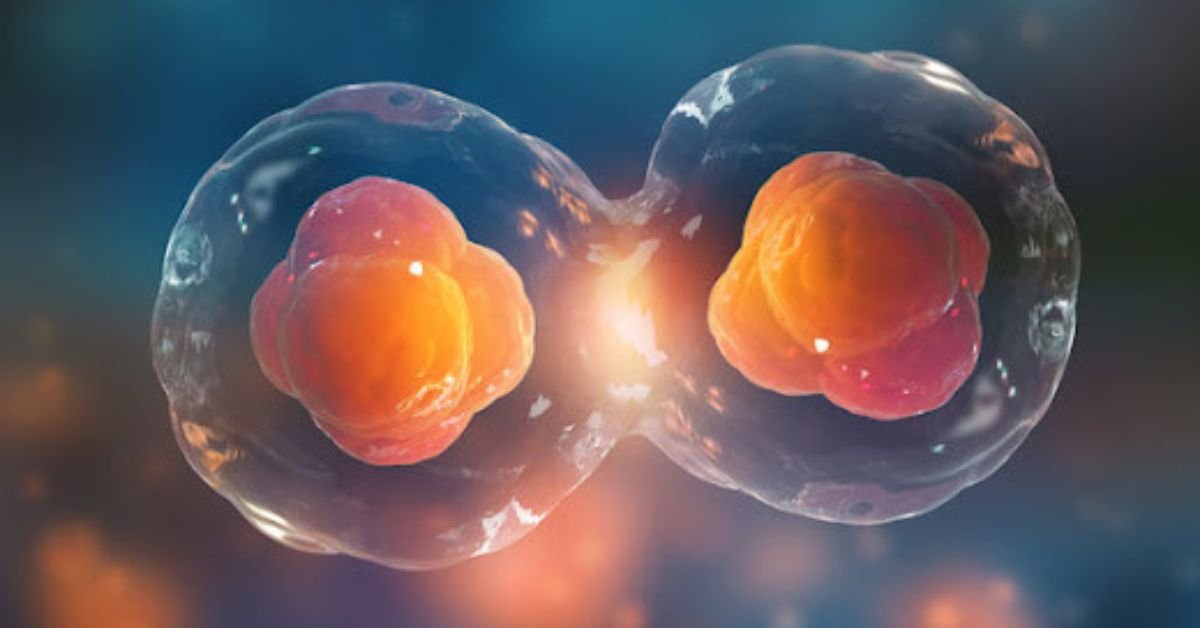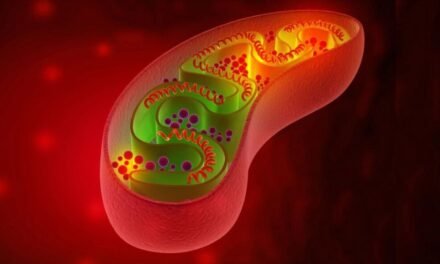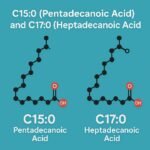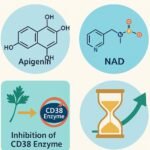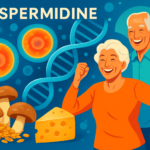Introduction
Welcome to the comprehensive guide on mTOR, a key regulator of cellular growth and metabolism. In this article, we will delve into the fascinating world of mTOR and explore its functions, signalling pathways, and its relevance to human health. Whether you are a student, researcher, or simply curious about the wonders of biology, this article will provide you with an in-depth understanding of mTOR and its significance in the intricate machinery of life. Our body has its own systems of natural checks and balances.
mTOR: The Master Regulator of Cell Growth and Metabolism
mTOR, an abbreviation for mammalian target of rapamycin, is a protein kinase that plays a central role in coordinating cellular processes such as growth, metabolism, and autophagy. It acts as a master regulator, integrating various signals from the environment and nutrient availability to orchestrate cellular responses. Rapamycin is a natural anti-fungal antibiotic produced by soil bacteria first discovered on Chile’s Easter Island. To understand mTOR, you need to know how its opposite — called autophagy — works. mTOR is anabolic; it builds things up, like cell growth and proliferation.
Autophagy, on the other hand, is a cellular spring cleaning that’s catabolic; it breaks things down (the word literally means “self-eating”). Basically both of them are your body’s systems of natural checks and balances.When we eat carbohydrates or protein, insulin is secreted, and the increased insulin levels, or even just the amino acids from the breakdown of ingested protein, activate the mTOR pathway,
The Discovery of mTOR
The journey of mTOR began in the early 1990s when it was first identified in a study exploring the mechanism of action of a natural product called rapamycin, known for its immunosuppressive properties. Scientists observed that rapamycin inhibited the proliferation of immune cells, providing a clue about the presence of a key signalling pathway involved in cell growth control. National Geographic called rapamycin “the Easter Island drug that extends lifespan of old mice.In 1994, researchers found a protein that directly interacts with rapamycin, which became known as mTOR.Further research led to the discovery of mTOR and its pivotal role in cellular processes.
mTOR Signalling Pathways
The mTOR pathway consists of two distinct complexes, mTOR Complex 1 (mTORC1) and mTOR Complex 2 (mTORC2), each with unique functions and downstream targets.
mTORC1: Orchestrating Cellular Growth and Metabolism
mTORC1 is primarily responsible for regulating cell growth and metabolism in response to nutrient availability and growth factors. It integrates signals from amino acids, energy status, and growth factors to control processes such as protein synthesis, lipid metabolism, and autophagy. mTORC1 is the most widely studied of the two complexes and responds to anabolic (building) stimuli like insulin and amino acids. Essentially, this just means that any time you eat, you activate mTOR.
The Role of mTORC1 in Protein Synthesis
Protein synthesis is a fundamental process that governs cell growth and proliferation. mTORC1 activates protein synthesis by phosphorylating key regulators involved in translation initiation, such as the ribosomal protein S6 kinase (S6K) and eukaryotic initiation factor 4E-binding protein (4E-BP).
mTORC1 and Lipid Metabolism
mTORC1 also plays a crucial role in lipid metabolism, influencing processes such as lipogenesis and lipolysis. It promotes lipid synthesis by activating key enzymes involved in fatty acid and cholesterol biosynthesis.
Autophagy: A Balancing Act
Autophagy is a cellular recycling process that maintains cellular homeostasis by degrading damaged or unnecessary components. mTORC1 negatively regulates autophagy, inhibiting the process when nutrients are abundant. However, under nutrient-deprived conditions, mTORC1 inhibition leads to autophagy activation, providing cells with essential building blocks for survival.
mTORC2: Beyond Growth and Metabolism
While mTORC1 predominantly regulates growth and metabolism, mTORC2 has a broader range of functions. It is involved in cytoskeletal organisation, cell survival, and metabolism.
mTORC2 and Cytoskeletal Organization
The cytoskeleton is a dynamic network of protein filaments that provides structural support to cells and plays a crucial role in cellular motility. mTORC2 influences cytoskeletal organisation by regulating the assembly and organisation of actin filaments.
mTORC2 in Cell Survival
mTORC2 also contributes to cell survival by activating prosurvival signalling pathways, such as the protein kinase Akt. Akt promotes cell survival by inhibiting apoptosis, a programmed cell death process.
Metabolic Regulation by mTORC2
mTORC2 plays a role in metabolic regulation by influencing processes such as glucose metabolism and lipid homeostasis. It modulates the activity of key metabolic regulators, including the transcription factor FOXO and the glucose transporter GLUT4.
Implications of mTOR Dysregulation
The dysregulation of mTOR signalling has been implicated in various diseases, including cancer, metabolic disorders, neurodegenerative diseases, and ageing. Understanding the intricate balance of mTOR signalling is crucial for developing targeted therapies and interventions for these conditions.
mTOR and Cancer
mTOR dysregulation is frequently observed in cancer, leading to uncontrolled cell growth and survival. Inhibition of mTOR signalling has emerged as a promising therapeutic strategy in several cancer types. Targeted mTOR inhibitors, such as rapamycin analogs, have shown efficacy in slowing down tumour growth and enhancing the efficacy of other cancer treatments.
mTOR and Metabolic Disorders
Given its role in regulating metabolism, mTOR dysregulation can contribute to metabolic disorders such as obesity, insulin resistance, and type 2 diabetes. Balancing mTOR activity through lifestyle interventions or pharmacological approaches may hold promise for managing these conditions.
mTOR and Neurodegenerative Diseases
mTOR dysregulation has been implicated in neurodegenerative diseases, including Alzheimer’s disease and Parkinson’s disease. The accumulation of abnormal protein aggregates and impaired cellular clearance mechanisms are hallmarks of these conditions. Modulating mTOR signalling and autophagy may offer therapeutic avenues for preventing or treating neurodegenerative diseases.
mTOR and Aging
Ageing is a complex process characterised by the progressive decline of cellular functions. Emerging evidence suggests that mTOR signalling plays a significant role in regulating ageing and lifespan. Caloric restriction, a dietary intervention known to extend lifespan, exerts its effects partly through mTOR inhibition.
Diseases Associated With mTOR Activation
The following conditions are commonly associated with mTOR overactivation. It’s important to note that this doesn’t necessarily mean that everyone with overactive mTOR will actually develop them! Many different genetic and environmental factors can influence the risk.
-Aging
-Cancer
-Autoimmune disease
-Depression
-Diabetes
-Obesity
-Alzheimer’s
-Macular degeneration
-Kidney disease
-Epilepsy
-Autism
-Chronic Pain
Activators of mTOR
-Proteins, especially if rich in leucine
-Excess calories
-Excess carbs
-Exercise (in the brain, muscles, and heart, but blocks it in the liver and fat cells)
-Orexin
-IGF-1
-Insulin
-Testosterone
-Ghrelin (in the hypothalamus)
-Leptin (in the hypothalamus)
-Thyroid hormone (in the hypothalamus)
-Oxygen
-Ketamine (in the brain, producing an antidepressant effect)
-IL-6 (in the muscles and fat)
-Amino Acids ( especially leucine)
-Phosphatidic Acid
-PI3K-AKT Pathway (phosphoinositide 3-kinase (PI3K) and AKT pathway )
-Wnt Signalling
-Hypoxia ( Low oxygen levels (hypoxia) can activate mTOR in certain cellular contexts, such as in response to stress or during adaptive processes)
Techniques for mTOR Pathway Inhibition
Benefits include Increased Lifespan , Improved Cellular Health , Protection Against Age-Related Diseases , Enhanced Autophagy , Metabolic Benefits , Cancer Prevention , Neuroprotection
-Protein restriction
-Calorie restriction
-Ketogenic Diets
-Intermittent Calorie Restriction
-Exercise (inhibits mTOR in the liver and fat cells, but activates it in the brain, muscle, and heart)
-Cortisol/Glucocorticoids
-Metformin
-NAC
-Resveratrol
-Aspirin
-Omega-3
-Extra Virgin Olive Oil
-EGCG/Tea
-Curcumin
-R-Lipoic Acid
-Caffeine
-Fisetin
-Apigenin
-Quercetin
-Genistein
-Taurine
Conclusion
In simple terms, mTOR exists in almost every cell, where it controls a host of metabolic functions. mTOR is a fascinating protein kinase that serves as a central regulator of cellular growth, metabolism, and autophagy. Its signalling pathways intricately orchestrate the balance between cell growth and survival, influencing various physiological and pathological processes. Understanding the roles of mTOR and its dysregulation opens up new avenues for therapeutic interventions in cancer, metabolic disorders, neurodegenerative diseases, and ageing. By unravelling the secrets of mTOR, scientists and medical professionals are paving the way for innovative treatments and improved human health.
Frequently Asked Questions
Learn How it Works!
What does mTOR stand for?
mTOR stands for mammalian target of rapamycin.
How does mTOR regulate cell growth?
mTOR regulates cell growth by controlling processes such as protein synthesis and lipid metabolism.
What is the role of mTORC1 in autophagy?
mTORC1 negatively regulates autophagy, inhibiting the process when nutrients are abundant.
Can mTOR dysregulation contribute to cancer?
Yes, mTOR dysregulation can contribute to cancer by promoting uncontrolled cell growth and survival.
Are there any drugs targeting mTOR for cancer treatment?
Yes, targeted mTOR inhibitors, such as rapamycin analogs, are being used in cancer treatment.
How is mTOR involved in ageing?
mTOR signalling has been linked to the ageing process, and its inhibition may play a role in extending lifespan.

